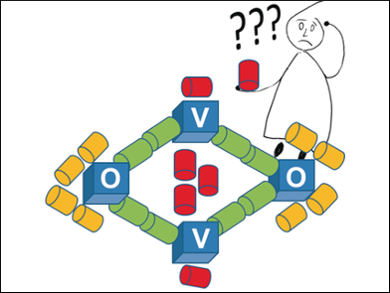The electronic structure of the most basic four-atom V2O2 cluster is still debated—even though vanadium oxides are widely used in heterogeneously catalyzed oxidation reactions, such as sulfuric acid and maleic anhydride syntheses.
Hans-Jörg Himmel and Olaf Hübner, University of Heidelberg, Germany, have found evidence of a strong V–V bond in the V2O2 molecule using infrared spectroscopy and quantum chemical calculations. To prevent aggregation of vanadium oxide clusters, the researchers co-deposited vanadium and isotopically labeled mixtures of O2 in a matrix of solid neon.
Vibrational and electronic excitation spectra were recorded for the matrix-isolated clusters and compared to predicted spectra obtained from ab initio multireference calculations. The team performed a natural bond orbital (NBO) analysis, which revealed a 1.74 V–V bond order (i.e., somewhere between a single and a double bond). They also constructed an atoms in molecules (AIM) model of electron density, which indicated a bond between vanadium atoms.
- Multiple Metal-Metal Bond or No Bond? The Electronic Structure of V2O2,
Olaf Hübner, Hans-Jörg Himmel,
Angew. Chem. Int. Ed. 2017, 56, 12340–12343.
DOI: 10.1002/anie.201706266




